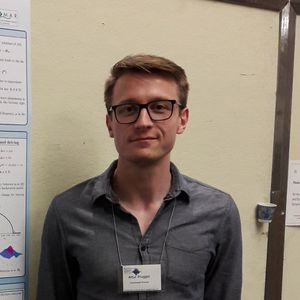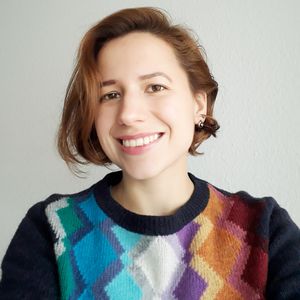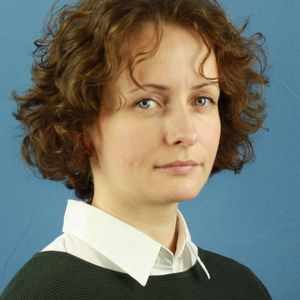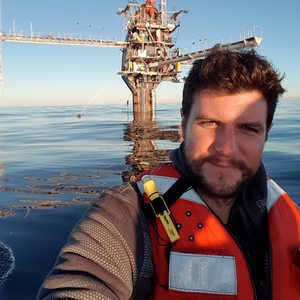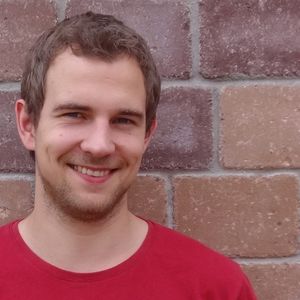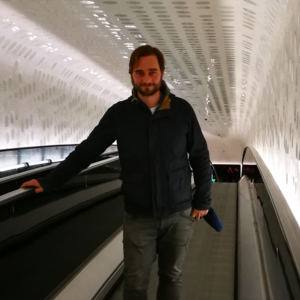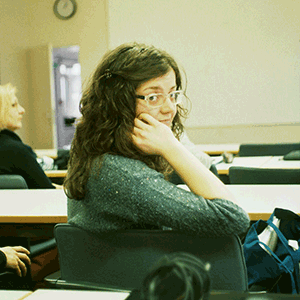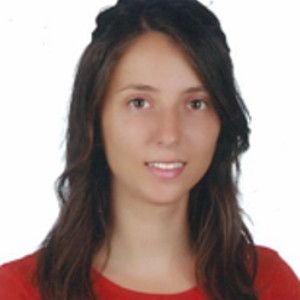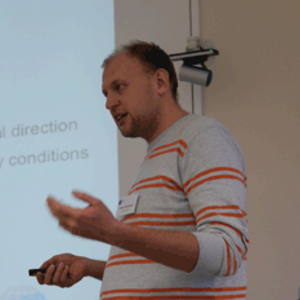Reports
Nonlinear waves, dissipation and (quasi-)geostrophic balances
I can show that for certain type of backscatter there are exact exponentially growing solutions, which shows that energy can get concentrated at some scales, rather than be transferred across scales.
Hi, my name is Artur. I am a PhD student at the University of Bremen and I am a member of the subproject M2 “Systematic multi-scale modelling and analysis for geophysical flow” since April 2017. My supervisor is Professor Jens Rademacher and I work in his research group “Applied Analysis”.
My research is about investigating the effects of various damping and driving realisations on the dynamics of different geophysical fluid models. Waves in linearisations of these models often characterise large scale phenomena in the ocean and atmosphere. I am interested in finding and analysing solutions of the full nonlinear equations.
Exact steady solutions for instance can bifurcate from trivial solutions by changing some parameters. In various cases we can prove analytically when these bifurcating waves occur and we can also determine some of their properties, such as their stability. With numerical tools we can corroborate these results and obtain additional insights into their structure and further properties.
Somewhat surprisingly, there are also linear waves that solve the full nonlinear problem. I was able to extend the class of known solutions of this type and for the first time took into account backscatter. For instance, I can show that for certain type of backscatter there are exact exponentially growing solutions, which shows that energy can get concentrated at some scales, rather than be transferred across scales.
For the investigations I use simple models like the single-layer and two-layer shallow water model as well as more complex ones like the Boussinesq approximation and the Navier–Stokes equations. In order to analyse the dynamics numerically I use the Matlab package “pde2path”.
With our investigations of idealised cases we hope to gain a better understanding of the different models used in the ocean and climate research. It is not only important from the mathematical perspective, but also could help to evaluate and improve numerical prediction models for weather and climate.
Reducing spurious diapycnal mixing in ocean models
My part of work is studying the newly proposed methods of rotating the diffusive part of the advection schemes into the isoneutral plane.
Hi everyone, my name is Margarita and I’m a PhD student of the subproject M5 “Reducing spurious diapycnal mixing in ocean models.” This project is about development and analysis of algorithms leading to reducing spurious mixing in ocean models.
Particularly my part of work is studying the newly proposed methods of rotating the diffusive part of the advection schemes into the isoneutral plane. I work in AWI under supervision of Sergey Danilov.
By the moment adapted to triangular meshes with vertex-based and cell-based placement of scalar variables algorithm described by Lemarie at al. (2012) was implemented on the sea-ice model FESOM2.0. I started doing reference potential energy (RPE) analysis of the implemented harmonic version of the algorithm. Also biharmonic version is to be implemented soon. RPE analysis will be held for both versions and also on dissorted meshes. This analysis allows to determine spurious mixing depending on advection schemes and meshes type.
The future work includes analysis of spurious mixing with variance decay technique (by Knut Klingbeil et al.), analysis of regular and irregular meshes, carrying of realistic ocean simulations and analysis of spurious mixing under real conditions.
Screening The Coupled Atmosphere-Ocean System Based On Covariant Lyapunov Vectors
I use the tangent linear version of the coupled atmosphere-ocean quasi-geostrophic model MAOOAM, and calculate the CLVs based on the so-called Ginelli method.
Covariant Lyapunov vectors (CLVs) reveal the local geometrical structure of the systems‘s attractor, thus providing valuable information about the basic dynamics. They are physically meaningful since they point into the directions of linear perturbations applied to the trajectory of the system. CLVs are linked to Lyapunov exponents, which describe the growth or decay rate of linear perturbations.
My name is Melinda Galfi, and I am a postdoc in the M1 subproject. I am continuing the work on CLV analysis started by Sebastian Schubert. I use the tangent linear version of the coupled atmosphere-ocean quasi-geostrophic model MAOOAM, and calculate the CLVs based on the so-called Ginelli method. I compute the CLVs in the phase space of the model, spanned by the spectral model variables, which can be grouped into four different categories: atmospheric dynamic and thermodynamic variables, as well as oceanic dynamic and thermodynamic variables.
The spectrum of Lyapunov exponents of our systems reveals the existence of a central or slow manifold. This is a basic property of coupled ocean-atmosphere models, and has to do with the multiscale character of this type of chaotic system. Based on the CLVs, we hope to understand more deeply the dynamical properties of the system itself, and especially of the slow manifold. To achieve this, one can use several CLV based indicators. One of these indicators is the variance of CLVs, showing the contribution of each model variable to the growth or decay of perturbations. By computing the variance of the CLVs in MAOOAM, we see that the atmospheric variables have the strongest contribution to the evolution of perturbations in our system. However, we detect an exception in case of instabilities growing or decaying on long time scales, where the contribution of the oceanic thermodynamic variables is approximately as strong as the one of the atmosphere. This shows that the d y n a m i c s of the slow manifold is governed by interactions between atmosphere and ocean, with the main coupling taking place through the ocean thermodynamics. The contribution of the ocean is the strongest in case of perturbations decaying over long time scales. Another useful indicator is the angle between CLVs, revealing the local structure of the attractor. Our results show that the angle between the CLVs corresponding to the slow manifold is dominantly very near zero, hinting to multiscale instabilities and geometrical degeneracies.
As a next step, we would like to repeat the CLV analysis for a substantially higher model resolution. The currently used resolution consists of 5x5 atmospheric and 5x5 oceanic modes. Our final goal is to study the energy transfers between atmosphere and ocean based on CLVs.
Novel Measurements for Surface Waves
I recently developed a system to measure both ocean wave dynamics and turbulent motions in the airflow above the waves.
I’m Marc Buckley, a Postdoc in the Techniques subproject. My objective to measure and understand small-scale physics within the first few meters above and below the wavy ocean surface, and how they influence fluxes of energy between the atmosphere and the ocean. My main experimental approach is Particle Image Velocimetry (PIV), which consists in seeding a turbulent flow with particles and tracking the particles to retrieve information about the turbulent motions in the flow. I recently developed such a system to measure both ocean wave dynamics and turbulent motions in the airflow above the waves. I deployed it first from R/P FLIP in October 2017 off the coast of California, and more recently (September-October 2018) from a small platform in the Oder Lagoon (Baltic Sea lagoon).
We plan to use these novel measurements alongside laboratory wave tank measurements to test and validate a wind-wave coupling model developed at University of Hamburg by Michael Hinze and Nicolas Scharmacher. Additionally, we plan to use these high resolution measurements to better understand the complex physical processes that control air-sea energy fluxes, including airflow separation past steep surface waves, wave breaking, wave and current generation through the action of viscous and form (pressure) stresses. This will possibly lead to a novel physics-based air-sea energy and momentum flux parameterization, that may go beyond existing bulk parametrizations that are used in current atmospheric and oceanic models.
Research visit to “The University of New South Wales” (UNSW) in Sydney, Australia from September to October 2018
Arriving back in Hamburg, I am filled with new motivation and ideas on how to continue my PhD. Without a doubt, I will always remember the impressions of my research stay in Sydney. Thank you MINGS for making this experience possible!
Being halfway done with my PhD, I felt the need to talk to other mathematicians working on the same topic as me: the analysis of algorithms for covariant Lyapunov vectors. However, with such an exotic topic, it is hard to find experts to discuss with. Thus, I had to search outside of local conferences and workshops. Looking into literature, I found an author whose work is closely related to mine. After speaking to him and my supervisors, we were convinced that a research stay would be perfect. The stay should not only serve as a means to communicate my recent findings, but the primary goal was to obtain new research questions and contacts to help advance the second half of my PhD.
When organizing the trip, I applied for visa well in advance and even got a next-day response. Everything else was planned on more short notice. Hence, I did not find a place to stay near university and ended up booking a hotel a bit farther away but with a good connection via public transport. My hotel was located near Green Square Station, which has a train running to the airport, the central station, and the inner city. The university can be reached by bus in about 15 minutes. Unfortunately, there is no train connection as of yet. However, constructions on a new line stopping at the university are expected to finish in 2019. My relatively short visit of three weeks did not require any prior arrangements with the university itself, although for longer stays I recommend filling out the visit request form online to gain access to special rooms, such as printer rooms. The visitor's room provided basis necessities like desks and computers. After preparing the assigned workspace on my first day, I had lunch with my host at a café on campus.
Following lunch, I presented my recent work as a basis for discussions, which ensued the next weeks. Sadly, one of my host's students, whom I wished to meet, was no longer at the institute. Nevertheless, the discussions were very fruitful. Besides the helpful comments on my presentation, I got to ask questions that always bugged me and talked about various research ideas. Some turned out to be worth pursuing, while others seemed no more than an interesting thought. This kind of feedback was exactly what I was hoping for. Even more so, we came up with new ideas during the stay. It left me with the impression that there is still much to discover about my topic. Moreover, my host told me of applications that were previously unknown to me. In particular, the computation of long-time coherent sets in ocean dynamics is an application that I find fascinating. One topic we initially planned to collaborate in turned out to be already well-answered. Nevertheless, we agreed upon keeping in touch for further exchange.
Next to the exchange with my host, I was lucky to meet a lot of friendly and interesting people inside and outside of university. For one, a professor staying with me in the visitor's room gave me useful tips on leisure activities. Although in spring the ocean is still a bit cold, a trip to Coogee Beach is a must, as it is only a 15-minute walk from university. A bit farther away, but still reachable with Sydney's Opal card for public transport, is the Blue Mountains National Park. From the heritage center near Blackheath Station there are several hiking trails leading through the beautiful nature. Another nice place is the Royal National Park south of Sydney. It boasts a long walk along the coast that occasionally passes by sandy beaches. However, watch out for blue bottle jellyfish and bring enough sun screen to protect yourself from the strong sun of Australia.
All in all, I had a wonderful time in Sydney that has been enriching on both a professional and personal level. Sydney is a modern city, where people are welcoming and always glad to help. Countless possible activities make it hard deciding on where to spend your free time. The three weeks were over so fast that I still wonder how I managed to explore Sydney and reach my goals. Arriving back in Hamburg, I am filled with new motivation and ideas on how to continue my PhD. Without a doubt, I will always remember the impressions of my research stay in Sydney. Thank you MINGS for making this experience possible!
Progress on CLVs in PUMA
We would like to understand the multiscale behaviour that is observable in the atmosphere using a spectral primitive equations model.
I am Sebastian Schubert and I am a postdoc in sub project M1 “Instabilities across scales and statistical mechanics of multi-scale GFD systems”.
We would like to understand the multi-scale behaviour that is observable in the atmosphere using a spectral primitive equations models. For this, we use PUMA, a spectral primitive equation model, that is the dynamical core of PLASIM (Planet Simulator). For this purpose, we are studying instability of linear Progress on CLVs in PUMA years. Our results show that there is convergence towards a rate function which describes the behavior of large fluctuations. Nevertheless, we did not find a growth dependent variation of the rate function. This means in order to find discriminating perturbations in a generalized framework which develop on chaotic backgrounds.
For this, we make use of the splitting of tangent linear space into a covariant Lyapunov basis as described by Osedelecs theorem. Recently, we have studied the existence of a large fluctuation theorem for the Lyapunov exponents. The investigation is difficult because the computational effort only allows “short” time series of about 25 years. Our results show that there is convergence towards a rate function which describes the behavior of large fluctuations. Nevertheless, we did not find a growth dependent variation of the rate function. This means in order to find discriminating properties that are growth dependent we really have to study the scale dependency of the CLVs. As a first step, we are investigating the fastest growing instabilities in comparison to their presence in the actual non-linear background state. We see a clear detachment of the scales present in the first CLVs after going to a resolution of T85 (128x256, 1.39° at the equator). Our objective is now to expand this analysis to leading linear instabilities (the CLVs) and see if there are trends of the dominating waves towards larger scales.
Developing stochastic parameterisations for different flow regimes
My work is focused on developing a stochastic parameterisation for the interaction between different flow regimes that will still preserve the total energy of the system and require not too much computational time.
Hi, I am Federica and I am a PhD student in project M2. I studied mathematics and now I am working at the Meteorologic Institute of the University of Hamburg. Mathematics and physics are very intertwined one with the other: improvements in understanding the mathematics leads to physics advances to new realizations which in turn help developing more accurate mathematical models. The invention of the computer and the improvement of this technology, allowed more and more mathematical theories to find useful applications and one field for those applications is also climate (and ocean) modeling. Even though a lot has already been accomplished in this field, there is still room for development. There are material limitations (as computer processors, memory storage, computer precision, etc…) as well as theory limitations (not all the phenomena taking place are fully understood at the moment and the techniques used to model them are not always accurate enough) that have to be overcome.
This is where my work takes place. To be more specific most climate models include only the slow and most energetic modes since including also the fast modes would require too much computational time. However, in real atmosphere and ocean there is energy, enstrophy and momentum transfer between the resolved and the unresolved scales. Most current deterministic parameterisation schemes do not re-inject energy into the resolved scales; instead they are effectively an energy drain. Similarly, current stochastic parameterisations are operated mainly ad hoc without consideration of energy and momentum consistency. Recent studies showed that neglecting the fast unresolved modes induce also error growth, uncertainty and biases in the model therefore they should be included somehow. My work is focused on developing a stochastic parameterisation for the interaction between different flow regimes that will still preserve the total energy of the system and require not too much computational time.
Stochastic processes have some nice features that make them suitable in climate and ocean modeling. However, when dealing with stochastic processes, extra care should be employed. Their main feature is to have different realizations with same initial conditions. Therefore, if you find something worked fine once, you should be sure it was not just luck!
Working on fundamental mathematical questions
It is important to understand fundamental mathematical questions for evaluating and improving numerical weather and climate prediction models.
Hi, I am Gözde. I am a PhD student in the subproject M2 Systematic multi-scale modeling and analysis for geophysical flow at the Jacobs University with Marcel Oliver. This subproject is splitted into three parts. Our part is variational model reduction. The purpose is to look at balance, multi-scale phenomena and variational approaches.
We mainly focus on foundational aspects of the problem. Then, we expect to encounter a variety of models where fundamental mathematical questions, such as well-posedness, regularity of solutions, validity of limits, and the analysis of associated numerical schemes is open and possibly nontrivial to resolve. It is important to understand them for evaluating and improving numerical weather and climate prediction models.
We started to examine the well-posedness for balance models for stratified flow. We will compare some models such as L1 balance and classical semigeostrophic model from shocks. Both models are formally derived in the same distinguished scaling limit and to the same order of expansion. The shocks in semigeostrophic theory are thought to be representative of the frontal dynamics regime, but this has not been tested in direct comparison.
I am really happy to be part of this project. The best advantage of it is to contribute with the other groups.
Stochastic superparametrization (SSP) for ocean models
We are working on adapting SSP for applying it to ocean primitive equations (PE).
Please download Anton's report here, since we cannot display his equations with our CMS.
The making and breaking of waves
My job will be the numerical analysis and implementation of the Cahn-Hilliard/Navier-Stokes model.
Hey, my name is Nicolas and I'm a PhD student currently working on the subproject M6: Techniques for atmosphere-ocean wave coupling, together with my supervisor Prof. Dr. Michael Hinze and also Dr. Jeff Carpenter and Dr. Marc Buckley from the HZG.
The energy transfer from the wind to the ocean surface and the energy dissipation caused by breaking waves accounts for the largest transfer of energy from the atmosphere to the ocean. However, despite the importance of the processes involved in surface wave generation and breaking, there are still fundamental gaps when it comes to modeling these processes.
We hope that the diffuse interface methods developed for the Cahn-Hilliard/Navier-Stokes model we are using will provide an improved method to deal with the current shortcomings of the simulation of the air-water interface. We believe that the method is well suited for that purpose due to its thermodynamical consistency, its mass-conserving property and its ability to handle topological changes, which might occur in breaking waves.
My job will be the numerical analysis and implementation of the model in order to be able to provide direct numerical simulations of the airwater interface in three dimensions, with focus on the formation and breaking of wind-generated surface waves. This requires, for example, the development and implementation of energystable time-integration schemes, efficient solvers and appropriate ways to incorporate the windforcing. Once finished, we will compare our simulations with measurements from laboratory experiments our colleagues at HZG have conducted.
